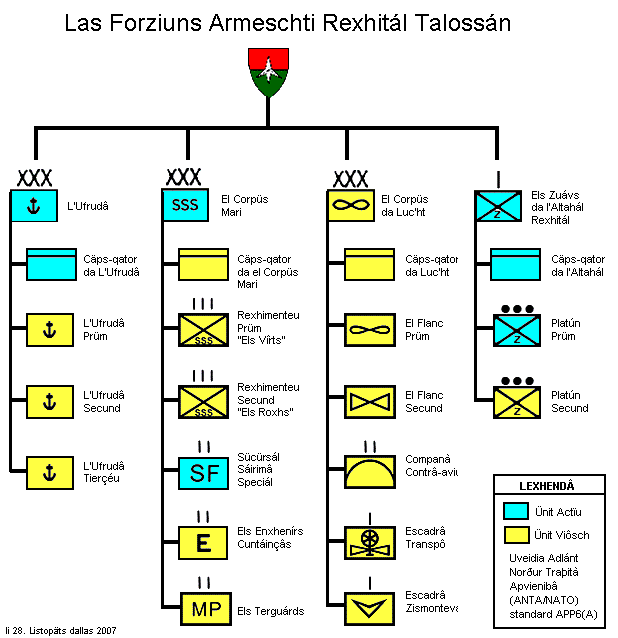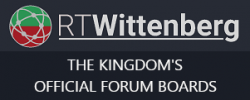Marì Rexhital Talossan
About the Navy
Status
DEFCON3 – The operations status of the Navy is “We, the Navy of One, welcome our new Canadian Overlords.”.
News
No news.
Organization

For more on the symbols displayed here, please see the US Army’s Field Manual 101-5-1: Operational Terms and Graphics. The unit symbol for Zouaves is a uniquely Talossan designation.
History
The Royal Navy was created by Prime Dictate 24PD7, the text of which describes the classes of commissioned naval vessels.
The Royal Talossan Navy is divided into three corps — the Fleet, the Marine Corps, and the Air Corps. Each arm of the service has its own culture, history, traditions and function.
It is patently untrue to state that the only traditions of the Royal Navy are rum, sodomy and the lash.
Navy Leaders
The Admiral:
Cunceláin Mestreu Prima (Master Chief Petty Officer of the Fleet):
Fleet
“The Navy’s a very gentlemanly business,” William Golding once wrote. “You fire at the horizon to sink a ship and then you pull people out of the water and say, ‘Frightfully sorry, old chap.'”
Mission
In this new century, protecting Talossa is more than simply defending it against a large-scale military attack. Increasingly, Talossa must safeguard her sovereignty and defend herself against asymmetric attacks launched from within and beyond her borders. The Royal Talossan Navy stands ready to protect King and Country. The Navy is the “Mighty Arm of the King” which can be used to summon peace or threaten war.
International conflict prevention and crisis management and the fight against international terrorism determine the tasks facing the Navy today and in the future. For these tasks the Navy will strive to offer Our Beloved Sovereign many viable alternatives for taking action, from command and control support to conducting evacuation operations from the sea to full-bore Naval combat. Rescue and evacuation – including rescue of Talossans held hostage – is, as a general rule, the responsibility of the Navy. Another task of the Royal Talossan Navy are forms of policing actions, eg to combat drug trafficking, piracy and illegal immigration. Finally, the Navy conducts domestic tasks such as providing a search and rescue (SAR) service at sea.
The Royal Talossan Navy will perform its tasks primarily in a joint and combined context, that is, in company with Royal Talossan ground and air forces and alongside international forces. The Navy will also provide a spectrum of maritime options that is as broad and graduated as possible such that the Kingdom’s capability to take political action is extended and flexible.
Ships
Vessels of the Navy shall be styled Vaißál da Sieu Maxhestà (abbreviated VSM) followed by the name of the vessel. The English translation is “His Majesty’s Ship,” but is not to be used for styling.
The ships of the Fleet shall be divided into three classes:
- TALOSSA Class: ships named after places in and of Talossa (e.g., HMS Maricopa). TALOSSA class vessels are often, but don’t have to be, motor-driven vessels;
- DONATUS Class: ships named after people who have helped make Talossa one heck of a nation (e.g., HMS Weston J. Erni). DONATUS class vessels are often, but don’t have to be, sail-powered;
- CONSTITUZIUN Class: ships named after objects, events, or ideals that have become a part of Talossa’s rich history (e.g., HMS Wittenberg). CONSTITUZIUN class vessels are often, but don’t have to be, human-powered.
All names and qualifications may be changed at the discretion of the Defence Minister and the Deputy Minister of the Navy, but as the law says, “they can’t go nuts with it”.
In the early days of the Kingdom, The first ship of the line for the Royal Talossan Navy was VSM Panache, skippered by Admiral Kurt Litscher. The fate of the Panache and her brave Admiral and crew are at present unknown. Dark rumours told by sailors in smokey back rooms all around La Mar Talossan suggest foul play. Some even hint at surprise attack b
Ministry of Defence





